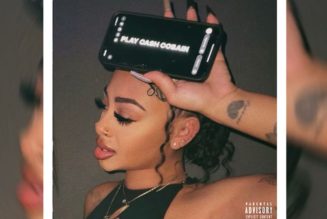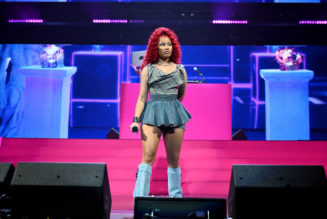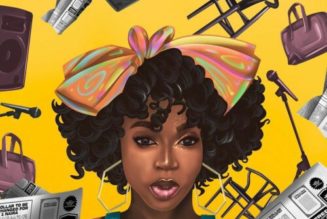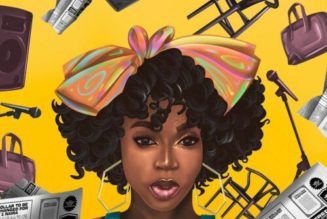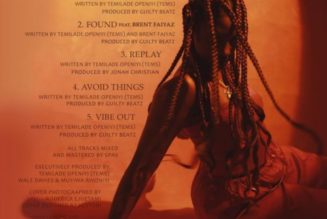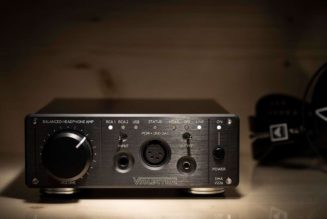Posted on February 4, 2024
Posted by John Scalzi
Yesterday I posted a picture of my current music composition setup here and on Bluesky, which prompted requests by music nerds to go into detail about the hardware and software I’m currently using. All right, then, fellow obsessives, strap in, we’re gonna geek out for a bit. If you’re not one of these obsessives, then here is a picture of a cat, and you are otherwise excused:

For everyone remaining, here we go:
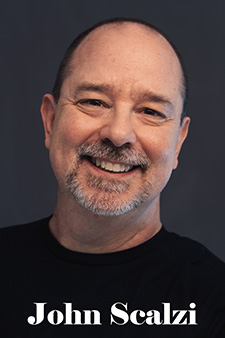
Computer: It’s the new MacBook Pro M3 Max I bought a few weeks ago, which I talk about extensively here, so I won’t go into any great detail about it now. If you won’t click over to the other piece, suffice to say it has all the bells and whistles and is generally ridiculously overspecced for what I’m currently using it for, which is fine, because that means I won’t have to get another computer for several years (knock on silicon).
When the M3 is in my basement studio, it’s paired up with a 27-inch LG LED 4K monitor that was upper-middle specced when I got it three or so years ago. I knew I was going to be using it primarily for music stuff, which does not generally need high refresh rates or awesome color fidelity, so it’s pretty unremarkable. I got it mostly to have enough real estate to do stuff in the DAW. Speaking of which:
Digital Audio Workstation: That’s the program you use to make the music, whether by playing it into the program live, programming it in or by using samples. There are several different types of DAWs out there in the world, and I have tried several, including Ableton Live, Reason, Bitwig, Reaper and Studio One. The one I end up using as the “daily driver” for my music production, however, is Logic Pro, from Apple.
There are a number of reasons for this. The first is that, while most DAW makers offer an inexpensive cut-down version of their software for people to try out (Apple’s Garageband software, which comes free with its computers and portable hardware, is their version), the fully-featured versions of the software can cost hundreds of dollars, either upfront or through a subscription. Logic Pro on the Mac is, for now, anyway, a one-time purchase of $200, which undercuts most (but not all) of the other DAWs.
The second reason is that it is in fact very well-featured, especially for someone like me for whom music-making is a hobby, not a profession. There are other programs that do certain things better (Ableton Live, for example, is the preferred DAW for live performances, while Pro Tools and Cubase, as I understand it, are the industry standards for professional music production in the studio), but as a jack-of-all-trades program, it’s very solid. It’s (reasonably) easy to get started in and just use, but if you want to dive deeper there’s a lot more there too.
A third reason is that, as Apple’s own product, it’s supported very well across Apple’s hardware. For example, you can use a program on the iPad to help control Logic Pro on your Mac; the iPad can also be used as a MIDI controller, which I find helpful when I’m away from my desk. Additionally, Apple has released a version of Logic Pro specifically for the iPad (this one is a subscription: $5 a month, I think), and you can work on a project on one and then port it to the other to continue working on it, with some limitations.
Finally, Logic Pro comes with its own extensive set of instruments, effects, samples, MIDI loops and other goodies, so that even if you never buy third-party plugins or samples, you will still have a hefty amount of fair-to-excellent synths and sounds to work with. Logic Pro is not alone in this — nearly every DAW ships with its own set of plugins, instruments, et al — but again, for a one-time $200 buy-in, that’s a better-than-decent value.
While Logic Pro is my daily driver with DAWs, I do use other ones from time to time, notably Ableton Live and Studio One, which are available on PC as well as Mac, so I have them on my Windows box for when I want to sketch something out in my office. Ableton also has arguably the best controller on the market, the Push, which I have been coveting, so that is also a reason I keep Live around; the Push is designed specifically to integrate with it. I also have Reason, but I mostly have it for the Reason Rack, a set of plugins I can use in Logic. If you are a PC-only person, you can’t get Logic Pro in any event, so Live, Studio One, Bitwig or some of the other DAWs are going to be your play.
Input Devices: If you’re using MIDI instruments, and you want to get your live performance into your DAW, you need something to play in order get it down. When I’m in the basement, I primarily use two controllers for this: the Novation Launchpad X, and the Theoryboard from Irijule. In both cases, you tell the controller what key you want to play in, and then the controller sets itself up so that it’s near-impossible to hit any bum notes. The Theoryboard also sets you up with a few dozen chords in the key which you can access with a single button press.
This is awesome, so long as you stay in one key and/or are doing a song with no key changes or chords that are not strictly speaking in the general key of the song. When that happens there are workarounds, but not simple ones. The Launchpad X can also serve to launch loops and do other editing/processing stuff, both in Logic Pro and in Ableton Live, which is cool but also something I almost never use. The problem here is me, clearly.
I also have a couple of other input devices with more traditional keyboards: Two Roli LUMI keyboards (they are small and connect with magnets to become one larger keyboard), and an Akai MPK Mini Plus. These mostly live upstairs in my office, where I use them with the PC if I don’t want to walk to the basement.
Live Instruments: But what if I want to connect an actual live instrument into my DAW and play it into whatever I am recording? I do this less often than you might think, but it does happen from time to time. For that, I have a Universal Audio Volt 2 Audio Interface, which is pretty basic and also does the job perfectly well for my own needs. It has two inputs, one of which is dedicated to my microphone (a RØDE NT-1), and the other for any instrument I need to plug in, including guitar, bass or ukulele. Detailing the stringed instruments I have is a whole other post, so I’ll skip that for now, but I will say that at the moment most of the live guitar I port into my recordings comes out of my Acoustasonic Telecaster, because it’s versatile, and because I have it on hand. I don’t typically run the guitar through an amp or effects pedals; I have enough virtual versions at this point to do the job well enough.
For listening to my stuff I have a pair of perfectly adequate Presonus Eris studio monitors, which are small because I’m sitting literally a foot and a half from them and they don’t need to be any bigger, or louder. I have 54-year-old ears, I don’t need to give myself a scorching case of tinnitus.
Plugins and Software Instruments/Effects: If you’re not happy with the virtual instruments and effects that ship with your DAW, you can buy more, either as one-off purchases or as part of a subscription. Be warned that a) you can buy a whole bunch without stopping to realize what you’ve done, b) that adds up to a whole lot of money, quickly. When Logic Pro boots up it tells me I currently have about 1100 plugins at my disposal, not counting the ones native in the software. This is a ridiculous amount and more than almost anyone would need, ever, including me. Please don’t do what I have done. Also, please note that Logic Pro (and Ableton Live, Studio One, Reason, etc) come with some really excellent instruments and effects; please exhaust their possibilities before picking up a bunch of other plugins.
That said, a lot of the plugins I have come as part of a larger bundle or subscription, where for one (not small) price and/or continuing subscription, you get a whole bunch of instruments, effects and (depending) loops and samples. Because I apparently have more money than sense at the moment, I have several of these — again, far more than I need, don’t be me.
Of these several bundles/subscriptions, the one I regularly get the most value from is from Arturia; specifically whatever is the most recent iteration of their V Collection of instruments and/or FX Collection of effects and sound shapers. These collections are the opposite of cheap! And also, I use the instruments and effects they offer nearly every time I make something, so I’m getting some real use out of them. If you can’t splurge on these collections, consider Arturia’s Pigments synth, which is a whole lot of great-sounding presets and super-nerdy customization options for $99.
I also have Native Instruments’ most recent Komplete bundle, which ranges in price from “expensive” to “are you kidding me right now,” depending on which you get (guess which one I got), and which I am of two minds about. On one hand, there are some genuinely amazing instruments, sounds and effects in there. On the other hand, NI’s “Kontakt” platform, which most of its virtual instruments runs through, undeniably sucks: It’s difficult to navigate, hard to control, and is as likely to crash my Logic Pro project as it is to work in it. I’d be more of a fan if Kontakt wasn’t such a pain in the ass.
Subscription plug-in bundles I have include ones from Waves, Plugin Alliance and iZotope (the latter two owned by Native Instruments, but not part of its Kontakt platform), as well as Antares (better known as the Auto-Tune company), Minimal and Reason. They’re all good! Although most people would probably be fine with just one as a subscription. That’s because most offer a bunch of plugins whose purpose overlaps with plugins in other packages, but each have a few that I use regularly that makes it worth it for me. iZotope, for example, has some excellent mastering plugins, while Minimal’s Current instrument (that’s its name) is a synth, effects box and samples service all in one. I also have an account with Splice, which offers literally millions of loops, samples and MIDI presets to play with. This is not an exhaustive list, merely what’s coming to me off the top of my head.
Once again, I am overspending on plugin bundles and subscriptions, and I do not recommend you be me. The world is full of excellent free and really-cheap plugins if you hunt for them, and again, whatever DAW you decide on very likely comes with a complete suite of instruments, effects and samples/loops that will keep you busy for a while. If you can splurge, but only a little, I recommend the Arturia bundles. They will keep you happily occupied. If I were going to suggest a plugin subscription bundle, I would probably lean toward Waves, as it has the widest range of plugins, or Minimal’s Current, since it puts everything into one virtual box. But this is where looking around and doing your own comparison shopping for what you need and can afford will pay off.
Oh, and, two one-off plugins I really like and use a lot at the moment: CUBE, a “morphing” synth from Lunacy Audio, which has some extremely cool sounds, and Transit, from Baby Audio, which is a stealth effects box posing as a very specific type of plugin (I also really like Baby Audio’s BA-1 synth, whose cute interface belies its capabilities).
And that’s where I am with music production here in February of 2024. If you have any additional questions, chuck ’em into the comments and I will try to get to them.
— JS

